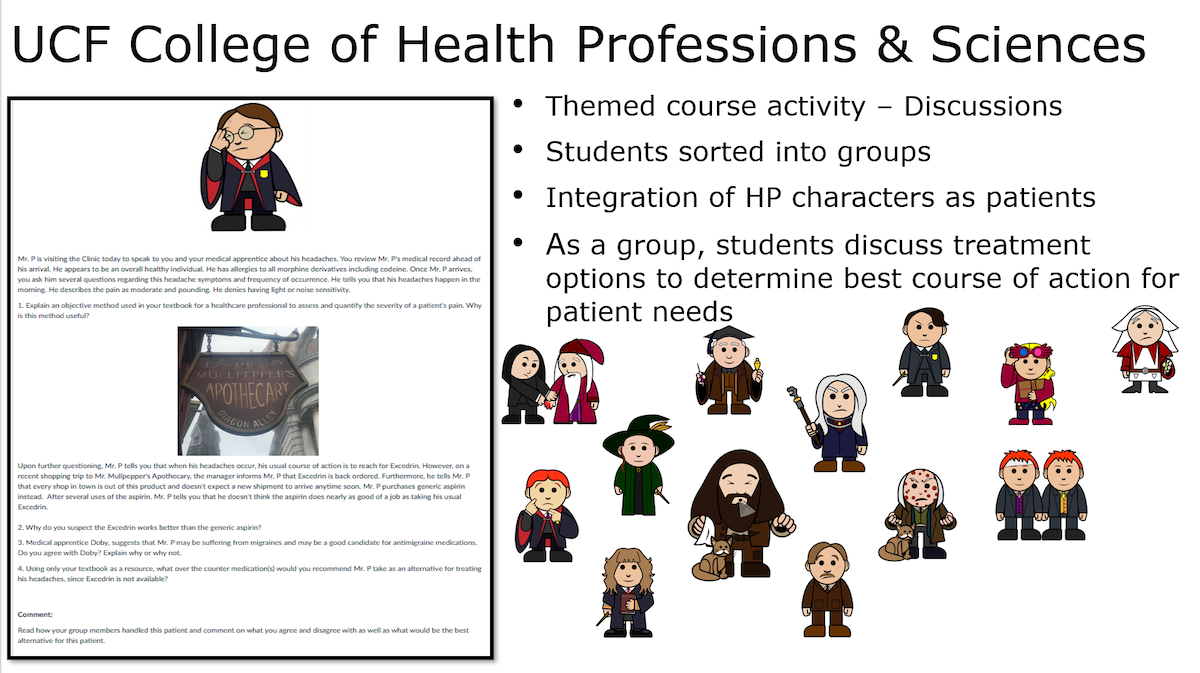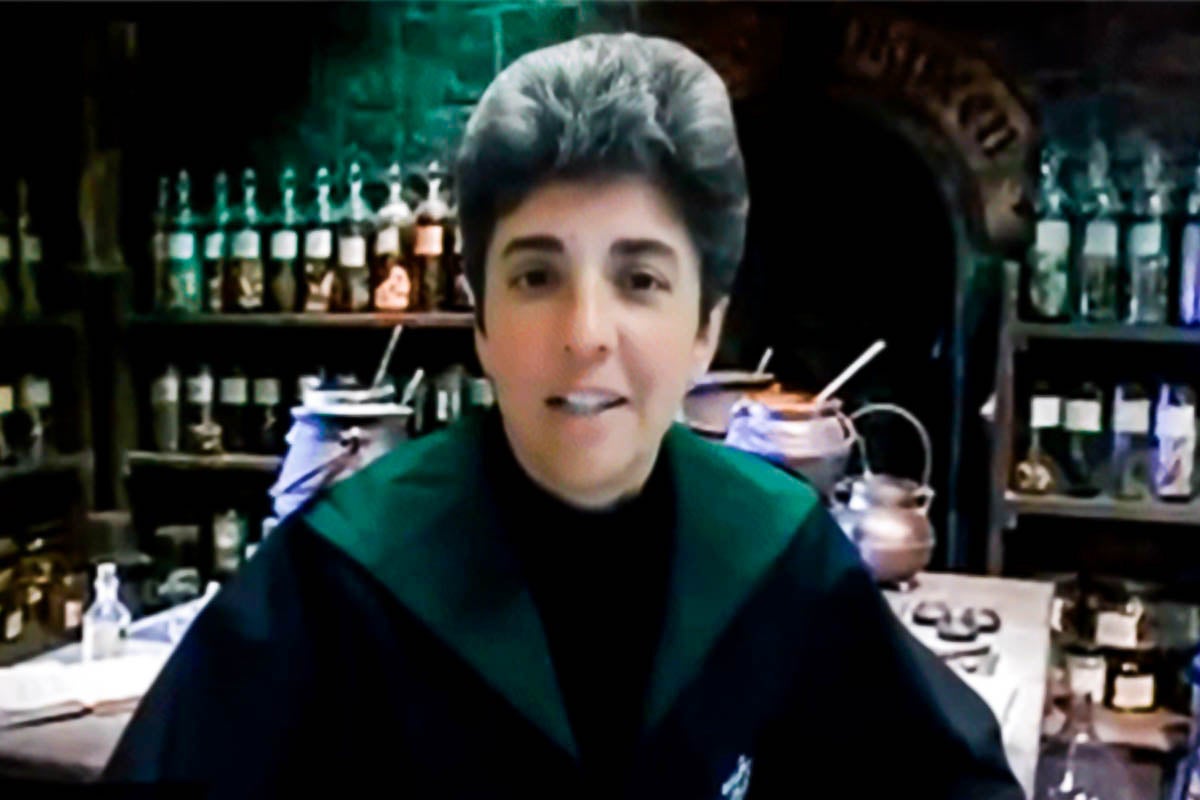When health sciences lecturer Martha Garcia-Stout designed her online Introduction to Pharmacology course (HSC 3147), she wanted to make the “very traditional and kind of dry” course interesting and engaging for students. So, about three years ago she worked with the Center for Distributed Learning (CDL) to conjure up a solution — infusing her and students’ love of the Harry Potter series into her course. It was a natural fit between the two topics. She recently upped her game by adding elements of gamification into her class and the results are proving that students have also leveled up.
Incorporating interactive games in the course has proven to enhance academic success; the number of students who earned an “A” in the class improved by almost 200% in the past three years, and there has been a 73% decline in the number of non-pass students (students who earn a “D” or an “F” in the class).
Working with Ashley Salter, an instructional designer for CDL, she integrated thematic gaming around Harry Potter references to engage students. For example, case studies feature characters — which were designed by Joseph Fauvel, team lead for CDL’s Graphics Team — inspired by Harry Potter. Students navigate pharmacology questions posed in a particular character-patient case and they recommend an appropriate resolution for the patient while avoiding “dead ends” in the patient’s care. The game calculates the percentage of questions answered correctly and how far into the adventure the student ventured before either completing the game or hitting a dead end.
“The Harry Potter theme, which students love, is incorporated into all elements of the course right down to the artistic bitmojis of famous Harry Potter characters afflicted with diseases and conditions suited to their character,” says Gail Kauwell, director of the Department of Health Sciences. “These characters serve as the basis for the clever case study gamification approach that students find to be creative, interactive, engaging and fun.”

Since launching the course, Garcia-Stout has connected with four faculty at other institutions who created similar themed courses. They, too, are seeing improvements in student engagement and performance. To help spread this practice to even more students, they will be presenting their approach at the American Association of Colleges of Pharmacy annual symposium in July. Their presentation, “Alohomora! Unlocking Longitudinal Theme-based Activities to Increase Student Engagement,” aims to help other faculty infuse gamification activities into their class and assess student learning.
“When I found other faculty doing the same thing, I knew we were on to something.” — health sciences lecturer Martha Garcia-Stout
“When I found other faculty doing the same thing, I knew we were on to something,” Garcia-Stout says. “Pharmacology can be a dry subject, and integrating these ideas makes it more interesting for students.”
Garcia-Stout teaches 600-900 undergraduate students each academic year through this course. The class is a required course for all health sciences students, but students in other disciplines, such as kinesiology, nursing, biomedical sciences and psychology can select the course as an elective.
“Overall, even students who are unfamiliar with Harry Potter love the case studies, and they ask for more every semester,” she says.
Garcia-Stout says she hopes more faculty will consider integrating thematic gaming into their classes, whether virtually or in-person.
“This gets the students involved to the point where they want to know ‘What’s next?’ and want to continue to learn and do more in the class,” she says.




